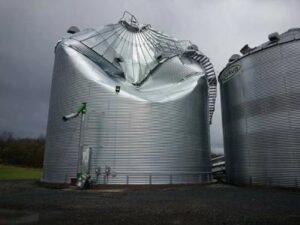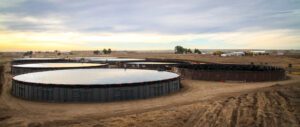Above ground Storage Tank Failures
Aboveground storage tanks (ASTs) are an essential part of many industries, including oil and gas, chemical processing, and agriculture. These tanks store various liquids, including petroleum products, pesticides, and fertilizers, among others. However, AST failures can have catastrophic consequences, from environmental damage to loss of life and property. Therefore, it is crucial to understand the causes of AST failures and how to prevent them. This article explores Aboveground storage tank failures causes and prevention

Causes of storage tank failures
Corrosion
Corrosion is one of the most common causes of AST failures. Corrosion occurs when the metal of the tank reacts with the environment, leading to the gradual deterioration of the tank’s structural integrity. Corrosion can be caused by moisture, oxygen, and other chemical reactions. Over time, corrosion weakens the tank’s walls, leading to leaks, spills, and even tank collapse.
Overfilling
Overfilling is another common cause of AST failures. Overfilling occurs when the tank is filled beyond its capacity, leading to excessive pressure on the tank’s walls. Overfilling can cause the tank to rupture, leading to spills and leaks. Overfilling can also cause the tank’s foundation to fail, leading to the tank’s collapse.
Design Flaws
AST failures can also be caused by design flaws. Poor design can lead to weak tank walls, inadequate support structures, and other structural weaknesses that can cause the tank to fail. Design flaws can also lead to inadequate ventilation, improper drainage, and other issues that can compromise the tank’s structural integrity.

Prevention of Aboveground Storage Tank Failures
-
Regular inspections:
Conduct timely inspections of storage tanks to identify potential issues such as leaks, corrosion, or deterioration.
-
Maintain adequate documentation:
Keep detailed records of all inspections, repairs, and maintenance work completed for easy reference and to monitor the condition of the storage tanks over time.
-
Corrosion protection:
Implement appropriate corrosion protection systems, such as cathodic protection or protective coatings, to prevent tank leaks and structural damage.
-
Overfill prevention:
Install overfill prevention devices and set up proper monitoring systems to avoid tank overflows that could lead to leaks or structural problems.
-
Monitor pressure levels:
Regularly check the pressure levels in the tanks to ensure they remain within safe operating limits.
-
Ensure proper installation:
Hire qualified professionals to install your storage tanks correctly, ensuring that all safety requirements are met and the foundation is solid.
-
Use high-quality materials:
Invest in storage tanks made from durable, high-quality materials that are resistant to corrosion and can withstand catastrophic failures of storage tank. See DirecTank products
-
Leak detection systems:
Install leak detection systems to help identify tank leaks early on, allowing for prompt repairs.
-
Proper venting:
Make sure your storage tanks have adequate venting systems to prevent pressure build-up that can lead to failures or leaks.
-
Emergency planning & employee training:
Develop an emergency response plan in case of a storage tank failure and train employees on how to respond effectively in such situations.
11.Proper Training of Tank Operators:
Proper training of tank operators is crucial to prevent AST failures. Tank operators should be trained on how to operate the tank safely, how to identify signs of damage, and how to respond to emergencies. Proper training can help prevent overfilling, improper handling of hazardous materials, and other issues that can cause AST failures.
Conclusion
AST failures can have serious consequences, from environmental damage to loss of life and property. Understanding the causes of AST failures and taking preventive measures can help prevent these catastrophic incidents. Regular inspection and maintenance, the use of protective coatings, and proper training of tank operators are essential to prevent AST failures. By implementing these prevention strategies, industries can ensure that their ASTs remain safe and operational for years to come.




